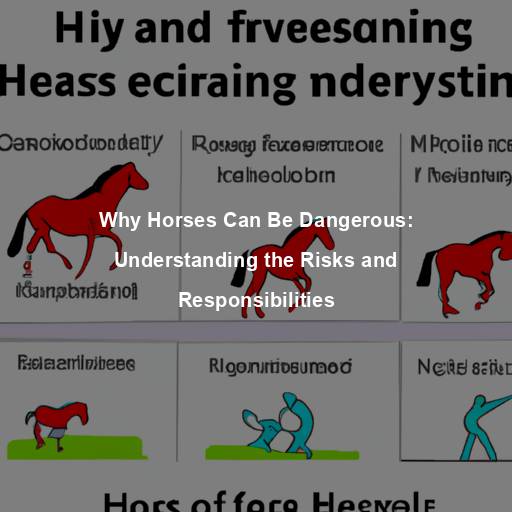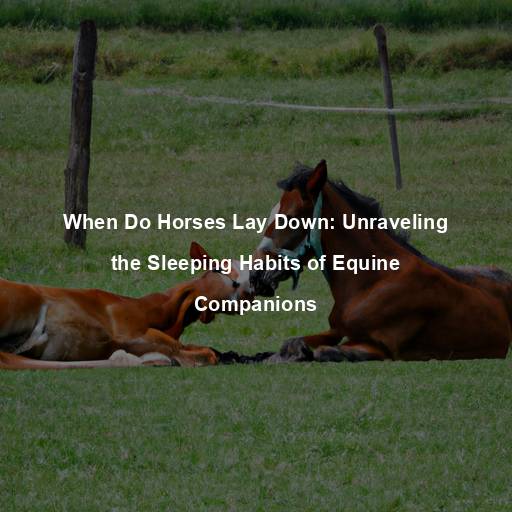The Art of Horse Grooming: Essential Techniques and Tips
Last Updated on July 2, 2023 by Evan
Picture this: you’ve risen at the crack of dawn to take care of your beloved horse. But as you brush its coat, you can’t help but notice that it lacks luster. As a proud horse owner, you’re left wondering what you could be doing wrong.
This scenario is common for many horse owners but doesn’t have to be. Welcome to the art of horse grooming— a labor of love that ensures not only the horse’s health but also strengthens the bond between you and your equine friend.
This guide will cover key aspects you should know as you embark on your life-long journey with these majestic animals.

Understanding The Basics Of Horse Grooming
The foundation of horse grooming starts with understanding its importance and knowing the right tools for the job.
Regular grooming is more than maintaining the horse’s appearance; it’s an essential aspect of their overall health. It’s your chance to check for any skin issues, injuries, or abnormal lumps that could cause concern. Plus, it’s an excellent opportunity for bonding—horses are social creatures, and this routine activity helps strengthen your relationship.
Ideally, you should groom your horse every day. But if daily grooming isn’t possible, aim for at least a few times per week.
You’ll need various brushes, curry combs, and a hoof pick. Each tool has its specific use and is an investment in your horse’s well-being.
The first comes in different types, including dandy brushes for removing dirt and body brushes for smoothing the coat. Curry combs help remove loose hair and stimulate the skin, while hoof picks are essential for maintaining hoof health.
Keeping Horses Barefoot
Keeping horses barefoot can have numerous benefits, including improved hoof health and comfort. Many horse owners are shifting to this approach as it allows the hoof to maintain its natural shape and flexibility, promoting better balance and circulation.
Barefoot trimming involves carefully shaping the hoof to mimic natural wear, fostering overall strength and integrity. If you haven’t tried it, consult an expert to help you do this and maintain optimal hoof health.
Just like with shoeing, not every horse is a candidate for the barefoot approach, so it’s essential to decide based on each horse’s needs.
Brushing Techniques For A Shiny Coat
Brushing is a fundamental part of horse grooming, and when done right, it can yield a shiny, healthy coat.
A good rule of thumb is to start with a curry comb to loosen dirt and dead skin, followed by a dandy brush to whisk it all away. Then, use the body brush for a final, soothing touch.
Be gentle as you brush; you wouldn’t want to hurt your horse’s skin. Also, brush in the direction of hair growth, not against it.
One common mistake is rushing the process. Take your time to ensure you’ve covered the entire body. By slowing down, you can also catch any changes in the skin or coat early before they become serious issues.
Cleaning And Checking The Hooves
Hooves are a vital yet often overlooked aspect of horse health. Regular cleaning can prevent issues such as thrush, cracks, and abscesses.
Start by picking up the hoof and using a pick to remove any dirt or rocks lodged in the sole. Work from the heel towards the toe, being careful not to dig too deeply.
Following the pick, you can use a stiff brush to remove any remaining debris. It’s good practice to do this daily to prevent complications.
While you’re at it, check for signs of problems. A foul smell, dark discharge, or a noticeable change in the horse’s gait may indicate a hoof issue that needs attention. Don’t hesitate to contact a professional farrier or vet if something seems off.
Mane And Tail Care
Tending to your horse’s mane and tail is a crucial step that requires patience and the right tools.
Start by using your fingers to gently untangle any knots, working from the bottom up. Avoid yanking or pulling, which can cause discomfort and hair breakage. A wide-tooth comb or special mane and tail brush can be helpful for stubborn tangles.
Selecting the right grooming products will also make a big difference. Look for detangling sprays or conditioners designed specifically for horse hair. They can ease the process and prevent future tangles, keeping the hair healthy and lustrous.
Bathing And Drying
Just like humans, horses enjoy a good bath. But it’s essential to do it right.
Warm water is typically more comfortable and effective at removing dirt. Pair it with a horse-specific shampoo to maintain the natural oils in the horse’s coat. Work it in with a soft sponge or brush.
Proper drying is as important as the bath itself. Use a sweat scraper to remove excess water and prevent chills. Then, you can use a towel to dab dry the face and legs. Always let your horse dry thoroughly before returning it to its stall to avoid skin issues.
Regular Health Checks And Grooming Routine
Grooming is an ideal time to conduct regular health checks on your horse.
Look out for signs of disease or discomfort, like changes in skin condition, sensitivity to touch, or swelling. Keep an eye on their weight, too—both weight loss and gain could be signs of underlying issues.
Some poor practices can cause this. Overfeeding or lack of exercise may lead to weight gain, which, in turn, causes obesity-related conditions like equine metabolic syndrome. On the other hand, weight loss can be due to malnutrition, dental problems, parasitic infections, or severe conditions like cancer or liver disease.
Stress and changes in the environment can also impact a horse’s weight. It’s essential to monitor your horse’s weight regularly and consult a vet if you notice sudden changes.
A consistent grooming routine will keep your horse at its best and also give it a sense of security. Whether daily or weekly, choose a schedule that works for you and stick to it. Consistency is key.
Dealing With Common Horse Grooming Problems
Despite your best efforts, you may encounter common grooming problems. Horses may be restless or anxious during grooming, making the process challenging. Training, patience, and positive reinforcement can help overcome this.
Skin issues like rain rot or ringworm are typical. Regular grooming helps you spot these early and seek treatment. Remember, it’s always best to consult your vet or a horse care professional when in doubt.
Can You Raise Horses And Dogs Together?
Horses and dogs often form unique bonds, especially when raised together. Breeds like Alaskan Shepherds get along well with horses, and their relationship can be mutually beneficial, providing companionship and reducing stress.
However, introducing a dog to a horse should be done carefully to ensure the safety of both animals.
Interestingly, grooming can play a role in this relationship. For instance, a horse might enjoy the company of a dog during sessions, offering a sense of comfort. On the flip side, observing a horse being groomed can help a dog understand similar processes, like brushing or bathing, making it less daunting when it’s their turn for a cleanup.
Get The Fundamentals Down
Mastering the art of horse grooming is a process, but it’s definitely worth the effort. After all, proper grooming is more than just a chore—it’s an investment in your horse’s health, happiness, and overall well-being.
Remember, quality grooming tools and a consistent routine are your best allies. Try applying these tips in your next grooming session and observe the difference.







